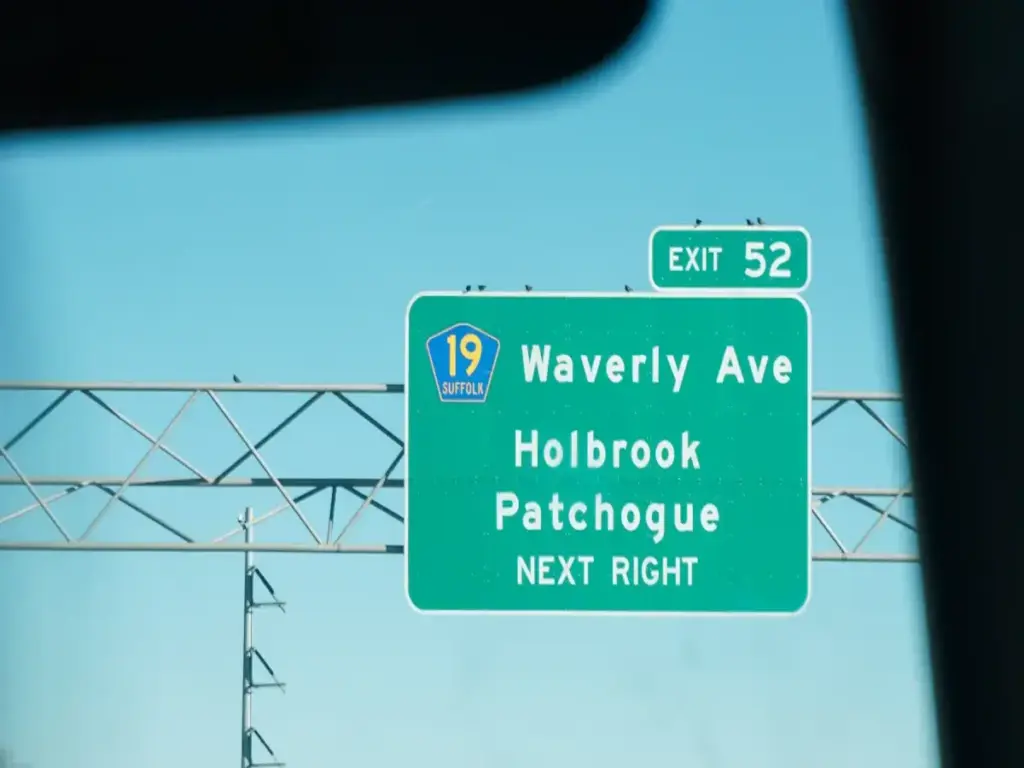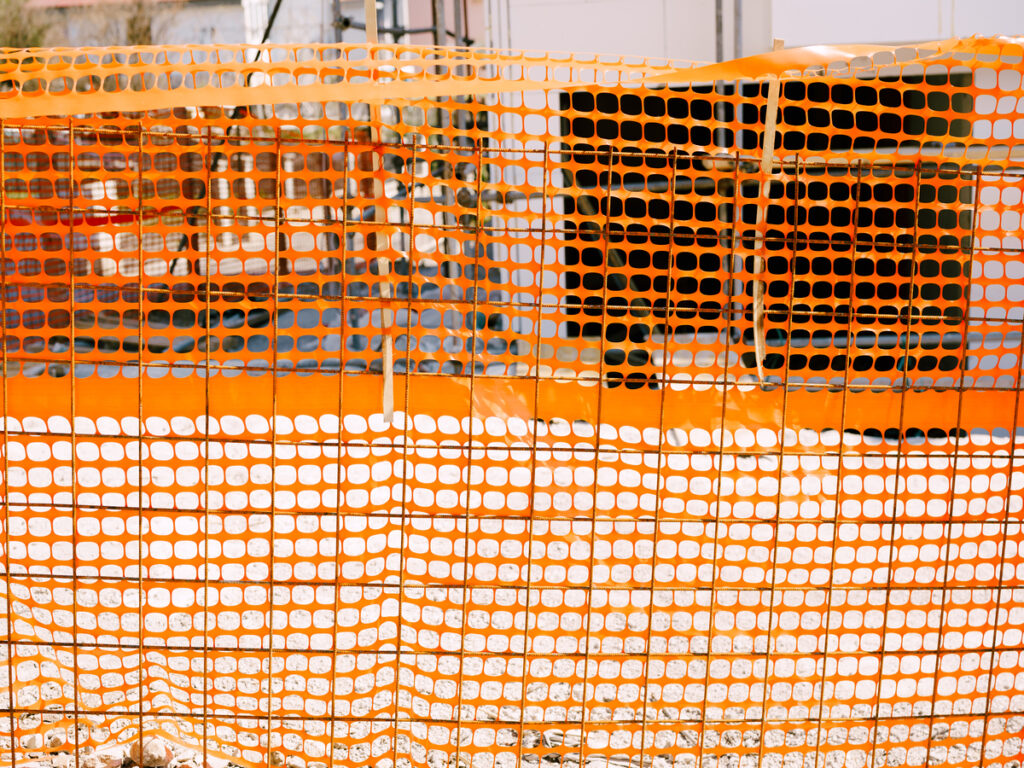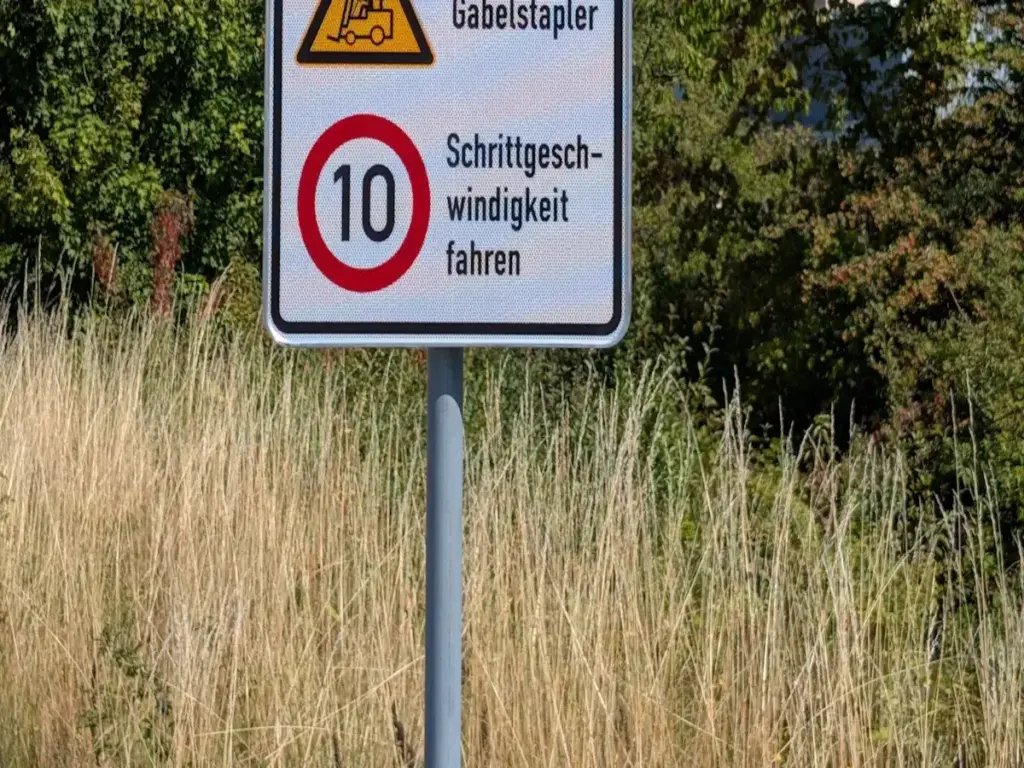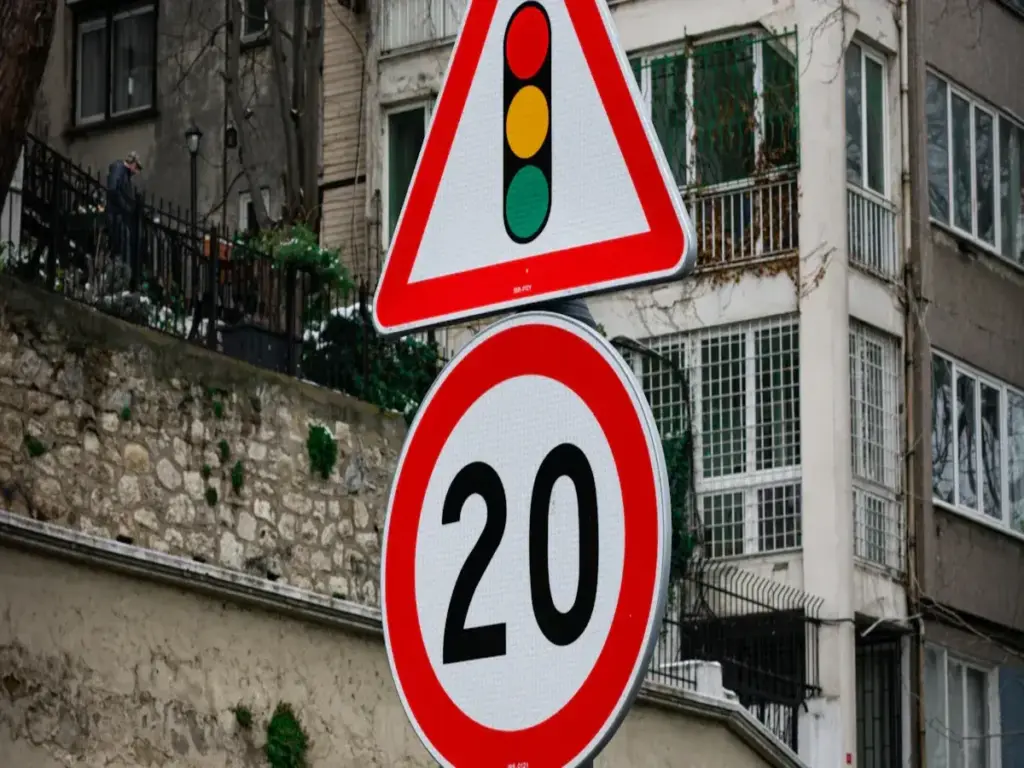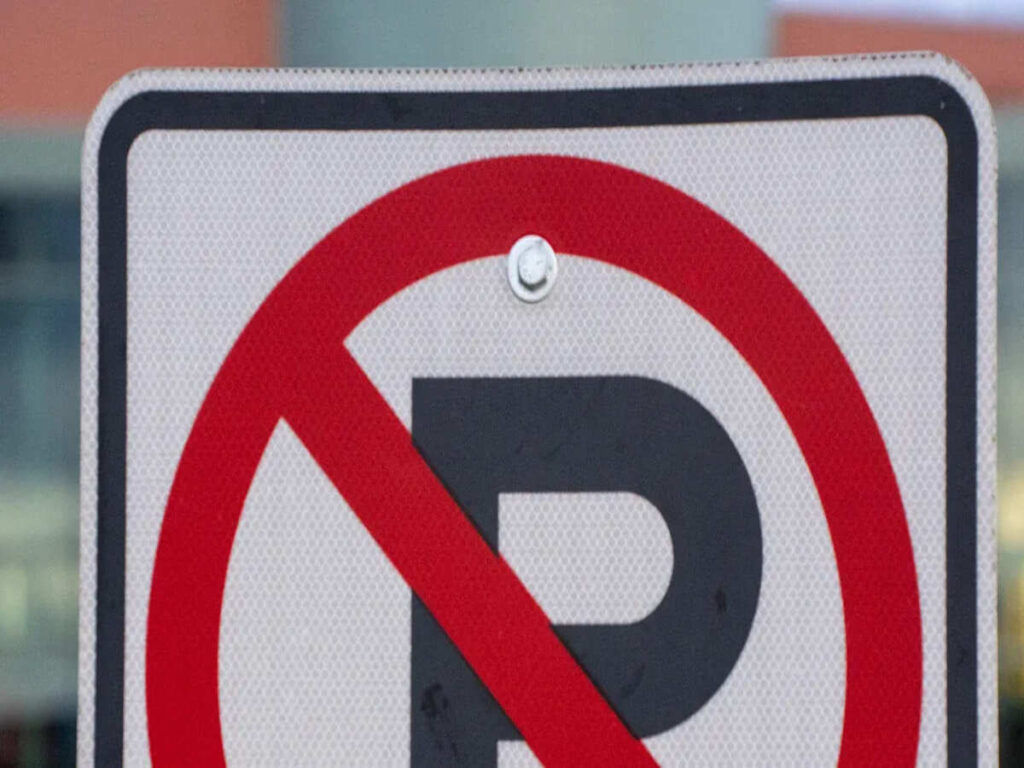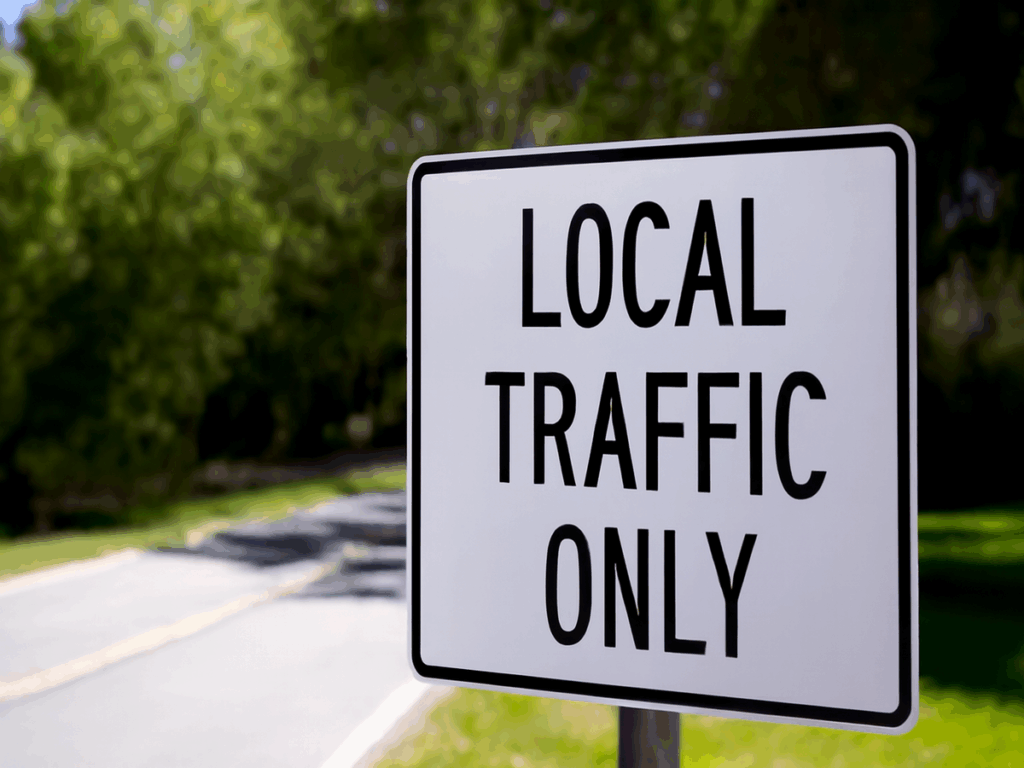
You see the “ローカルトラフィックのみ” sign when officials want to limit who drives in certain areas. This sign indicates that only local residents, ビジネス, or authorized vehicles are allowed access. Its primary purpose is to keep roads safe and help manage traffic flow. You might encounter it in neighborhoods, 建設ゾーン, or areas with heavy pedestrian activity. The “ローカルトラフィックのみ” sign is designed according to MUTCD traffic signs standards so everyone clearly understands its meaning.
If you’re responsible for managing traffic in your area or project, it’s essential to ensure that all traffic signs, including “Local Traffic Only” signs, are MUTCD-compliant. オプトラフィック offers a wide selection of high-quality, customizable 販売のための交通標識 that meet these standards. Whether you’re looking to buy local traffic signs for residential zones, 建設現場, or other sensitive areas, 耐久性を提供します, cost-effective solutions designed to improve safety and streamline traffic flow.
キーテイクアウト
- The “ローカルトラフィックのみ” sign lets only certain people use the road. 住民, ビジネス, and allowed vehicles can go through. This helps keep the area safe and less busy.
- These signs follow MUTCD rules for how they look and where they go. The signs are easy to see and understand. This helps drivers know what to do and follow the rules.
- Officials put these signs in neighborhoods and places with construction. They also use them where many people walk. The signs help protect people and control how cars move.
- It is important to put up the signs the right way and fix them when needed. Talking clearly with people helps everyone know what the signs mean. This makes the signs work well and keeps people safe.
- Following ‘Local Traffic Only’ signs helps keep the community safe. It lowers the chance of accidents and helps cars move better.
意味 & 目的
What the Traffic Sign Means
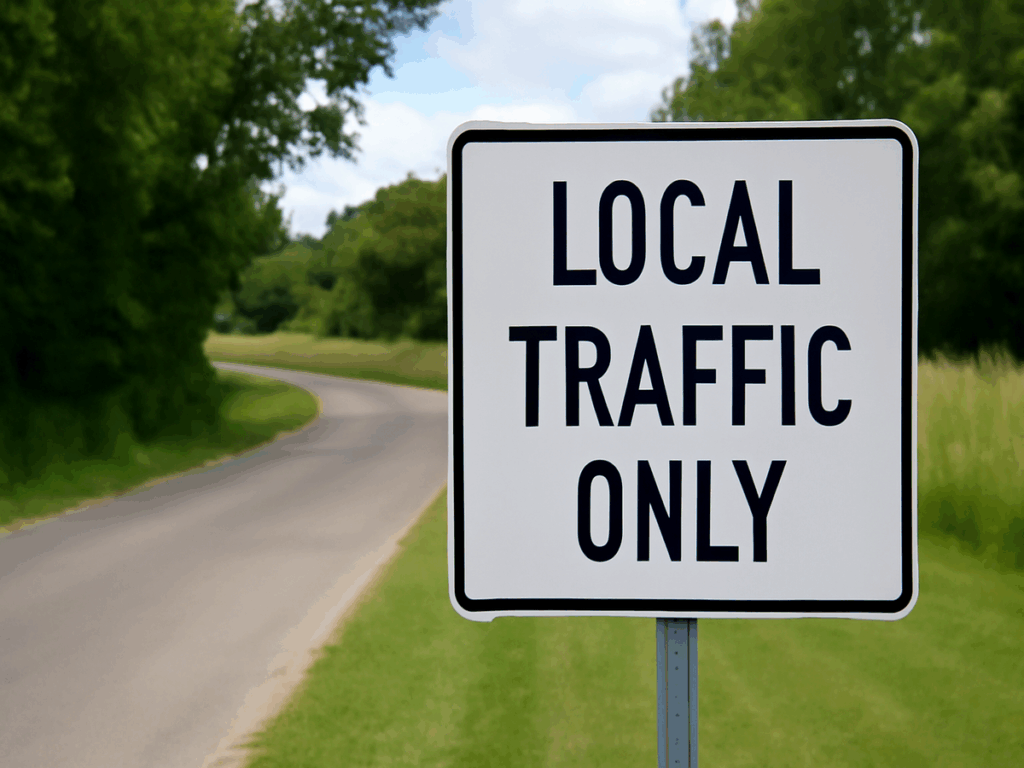
を見たとき “ローカルトラフィックのみ” サイン, it tells you that only certain vehicles can enter the area. These vehicles include local residents, people visiting businesses, and other authorized users. The sign does not allow regular through traffic. You must have a reason to be in the area, such as living there or making a delivery. This rule helps keep the road less crowded and safer for everyone.
The “ローカルトラフィックのみ” sign is part of MUTCD traffic signs. The 均一な交通制御装置のマニュアル (mutcd) sets the standards for these signs. The sign uses clear words and a simple design so drivers can understand the message quickly. You will often see this sign at the start of a street or near a work zone.
ヒント: Always check for extra information on the sign. 時々, the sign will include details like street names or say “Bridge Out” to help you understand why the restriction is in place.
Why It’s Used
あなたが見つけるでしょう “ローカルトラフィックのみ” signs in places where safety and traffic flow matter most. These traffic control signs help you avoid roads that are closed ahead, but they still let local users reach their homes or businesses. Here are some main reasons why officials use these signs:
- Let you know when a road is closed further ahead, but you can still use it if you are a local user.
- Work with other warning and detour signs to guide you safely through or around construction or closed areas.
- Use different messages for rural and urban areas. 例えば, 農村部で, あなたは見るかもしれません “ROAD CLOSED XX MILES AHEAD, LOCAL TRAFFIC ONLY.” 都市で, あなたは見るかもしれません “ROAD CLOSED TO THRU TRAFFIC.”
- Give you extra details, such as the name of a closed street or if a bridge is out, to make the message clearer.
These signs help reduce traffic in sensitive areas. They protect people walking or biking and keep construction zones safe. これらの標識に従うと、, you help keep your community safer and traffic moving smoothly.
MUTCD の交通標識: 分類 & デザイン
Regulatory Sign Category
You will find that MUTCDトラフィックサイン use a clear system to help drivers understand the rules. The “ローカルトラフィックのみ” sign belongs to the regulatory sign category. これらの兆候はあなたがあなたがしなければならないことを教えてくれます、または道でしてはいけません. The MUTCD classifies this sign under the R11-3 and R11-4 series. You might see different messages depending on where you drive. 農村部で, the sign often says “ROAD CLOSED XX MILES AHEAD, LOCAL TRAFFIC ONLY.” 都市で, you may see “ROAD CLOSED TO THRU TRAFFIC” または “ROAD CLOSED, LOCAL TRAFFIC ONLY.” These signs work best when paired with other warning and detour signs to guide you safely.
設計基準
MUTCD traffic signs follow strict design rules. The “ローカルトラフィックのみ” sign uses a rectangular shape. The background is white, and the letters are black or red for high contrast. This color scheme helps you read the sign quickly, 遠くからでも. The legend, or message, must be clear and easy to understand. The MUTCD also allows related signs, のような “STREET CLOSED” または “BRIDGE OUT,” when needed. Each sign must meet size and font standards so every driver can see and read the message.
注記: Good design makes sure you never miss important information while driving.
可視性 & 配置
You need to see MUTCD traffic signs clearly at all times. The signs use 反射材料を後押しします so headlights make them visible at night or in bad weather. Placement matters just as much as design. You will usually find these signs at the start of a restricted area or before a road closure. The sign should face oncoming traffic and stand at the right height for easy viewing. Proper placement keeps you informed and helps prevent confusion or unsafe driving.
If you’re looking to buy traffic signs for your project or community, オプトラフィック 高品質を提供します, MUTCD-compliant solutions that meet these standards. Order your traffic signs in bulk today to ensure your area remains compliant and safe.
いつ & 使用する場所
住宅地
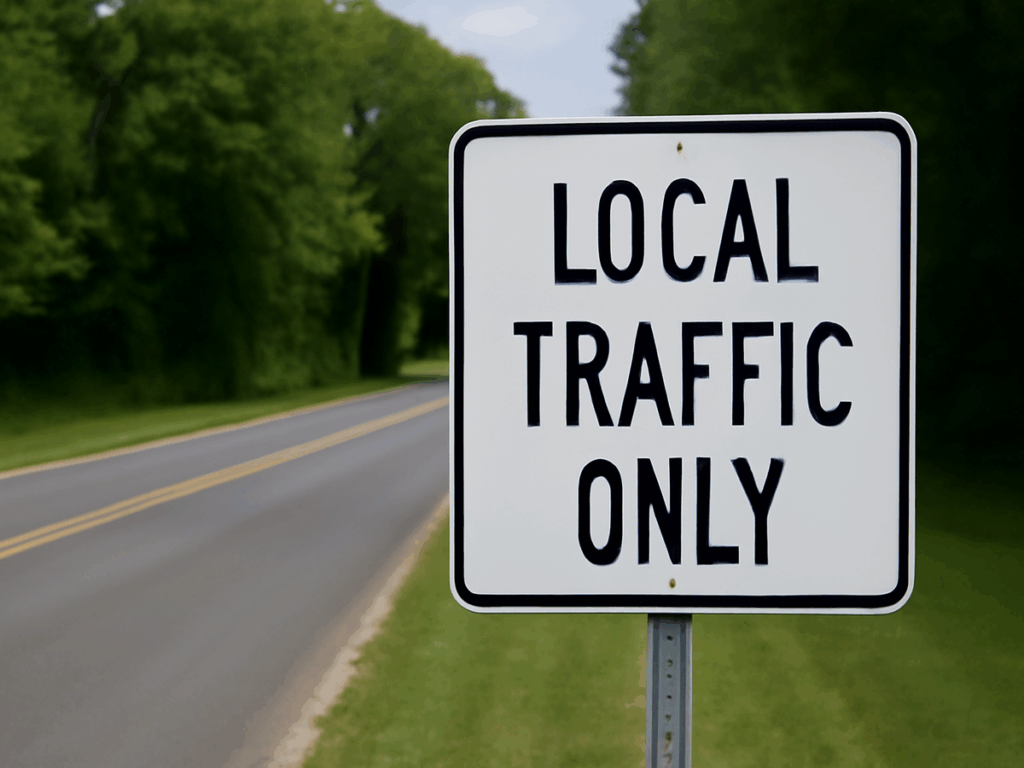
You often see “ローカルトラフィックのみ” signs in neighborhoods. These traffic control signs help keep streets quiet and safe for families. When you drive through a residential area, you may notice fewer cars and slower speeds. The sign tells drivers who do not live there to use other routes. This keeps children, pets, and cyclists safer. Residents and visitors can still reach their homes or friends.
建設ゾーン
You find these road signs near roadwork or construction sites. Workers use them to block through traffic and protect the work area. If you live or work nearby, you can still enter. The sign helps prevent traffic jams and keeps workers safe. Drivers who do not need to be in the area must turn around or follow detour signs. This keeps the construction zone clear and reduces the risk of accidents.
のために 建設会社, effective traffic management solutions are essential to ensure both safety and efficiency on-site. In addition to “Local Traffic Only” signs, オプトラフィック provides a wide range of MUTCD traffic safety signs specifically designed for construction zones, including Road Closed, 迂回, 制限速度, and Construction Ahead signs. These road work signs help you control traffic flow, reduce delays, and minimize risks, ensuring the safety of workers and drivers alike. Whether you’re managing a small residential project or a large-scale construction site, our construction zone traffic signs are durable, 信頼性のある, そして続くように構築されました.
歩行者天国
You may see “ローカルトラフィックのみ” signs in places with many people walking. These areas include school zones, 公園, and downtown streets. The sign limits cars so people can walk safely. If you need to visit a business or live nearby, you can enter. Others must find another way. This helps prevent crashes and makes the area more pleasant for everyone.
配置ガイドライン
You need to place these signs where they make the most sense. mutcdによると, 使用 “ROAD CLOSED—LOCAL TRAFFIC ONLY” signs when you want to stop through traffic but allow local access up to the closure point. The sign should be a horizontal rectangle. Place advance warning signs before the restricted area, のような “AHEAD” or detour signs, ドライバーは何を期待すべきかを知っています. State DOTs follow these rules and put the signs where they block through traffic but let locals in. Make sure drivers see the sign before they reach the closure. This helps everyone understand the rules and keeps traffic moving safely.
ヒント: Always check that the sign is easy to see and read. Good placement helps drivers make safe choices.
法律上の & 安全上の考慮事項
執行
It is important to know how rules are enforced for “ローカルトラフィックのみ” サイン. These signs must follow certain legal steps before police can give tickets. The table below lists the main things needed for enforcement:
| 側面 | Requirement/Guidance | Legal/Regulatory Implication |
|---|---|---|
| Authorization | Regulatory signs must be authorized by the public agency or official having jurisdiction. | Enforcement depends on proper authorization by relevant authority. |
| Conformance | Signs must conform to applicable ordinances or statutes of the jurisdiction. | Legal enforceability requires compliance with local laws. |
| 設計基準 | Signs must follow MUTCD standards for design, including shape, 色, legend, と取り付け. | Ensures uniformity and legal recognition of signs. |
| 応用 | ‘Local Traffic Only’ signs are used where local access is allowed but through traffic is restricted, often accompanied by warning and detour signs. | Proper application supports enforceability and clarity for road users. |
| Installation Approval | Weight limit and other regulatory signs require approval by the authority having jurisdiction before installation. | Indicates that installation without approval may invalidate enforcement. |
| Temporary Measures | Temporary regulatory signs supersede permanent ones and must comply with jurisdictional laws. | Temporary enforcement measures must also meet legal standards. |
Enforcement only works if the right people approve the signs and follow state laws. 例えば, in Connecticut, only certain officials can put up traffic control devices. Police can give tickets if you break the rules, but they need proof. いくつかの場所で, police cannot stop you just because they think you might break the rule. They must see you actually go past the sign at the end of the closed road. This means enforcement works best when signs are easy to see and in the right spot.
Impact on Traffic & 安全性
When you obey “ローカルトラフィックのみ” サイン, あなたは道路をより安全にするのに役立ちます. These signs keep extra cars out of busy or sensitive areas. You will see fewer cars in neighborhoods, near construction, or where many people walk. This helps protect people walking, 自転車に乗る, or working close by.
Local governments use MUTCD traffic signs to control traffic and keep people safe. If you drive past these signs without permission, you could get a fine and make things dangerous. Good enforcement and clear signs help stop accidents and confusion. 誰もがルールに従っているとき, traffic moves better and streets are safer.
🚦ヒント: Always look for regulatory signs. Following the rules keeps you and others safe.
ベストプラクティス
インストール手順
あなたはあなたの “ローカルトラフィックのみ” sign to be visible and effective. Start by choosing a spot with no obstructions like trees or parked cars. Make sure drivers can see the sign from a distance. Use a sturdy post and dig a hole about 2–3 feet deep. If you use concrete, let it set for at least a day. Attach the sign with bolts or brackets, keeping it straight and secure. The bottom edge of the sign should be at least 7 feet above the ground in areas with pedestrians or cyclists. Angle the sign about 93 degrees to the driver’s line of sight. This angle helps drivers see the sign clearly, 夜でも. 曲線, adjust the angle so drivers can read it as they approach. Add a post cap to protect the top and check that nothing blocks the sign from any direction.
ヒント: Always double-check the sign’s height and angle before finishing the job. This ensures you meet safety standards and legal requirements.
メンテナンスのヒント
You need to keep your signs in good shape for them to work. Inspect each sign regularly for damage, フェード, or dirt. Clean the surface so drivers can read the message easily. Check that the sign is still straight and at the right height. If you notice any damage or loss of reflectivity, replace the sign right away. Remove the sign promptly when restrictions end to avoid confusion. A good maintenance plan helps you stay compliant and keeps everyone safe.
- Inspect signs for damage or fading.
- Clean signs to maintain visibility.
- Replace damaged or outdated signs quickly.
- Remove signs when restrictions are no longer needed.
Communication with the Public
Clear communication helps everyone understand new or temporary restrictions. Place advance warning signs before the restricted area so drivers have time to react. 使用 可変メッセージサイン for real-time updates during big projects. Make sure flaggers wear bright clothing and use clear signals to guide traffic. Provide detour signs early so drivers can choose another route. Work with community leaders and local media to spread the word. Flyers, 看板, and public service announcements can help remind drivers about changes. Monitor traffic and adjust your plan if needed to keep things running smoothly.
注記: Good communication builds trust and helps drivers follow the rules.
一般的な間違い
配置エラー
You need to place “ローカルトラフィックのみ” signs where drivers can see them before they enter a restricted area. Many people make the mistake of putting these signs too far from the closure or in spots where trees, 駐車中の車, or other objects block the view. If drivers cannot see the sign in time, they may enter the area by mistake. Always check the sign’s location from a driver’s perspective. Make sure nothing blocks the sign and that it stands at the right height. Place advance warning signs if the restriction is not visible from a distance. This helps drivers make safe choices early.
🚧 ヒント: Walk or drive the route yourself after installing the sign. You will spot any visibility problems right away.
Maintenance Oversights
You must keep your signs clean and in good condition. Faded, 汚い, or damaged signs lose their effectiveness. Drivers may ignore a sign if they cannot read it. Some people forget to check signs after storms or construction work. Others leave signs up after the restriction ends, which confuses drivers. Set a schedule to inspect each sign. Clean the surface, check for fading, and replace any damaged signs quickly. Remove temporary signs as soon as they are no longer needed.
- Inspect signs every month.
- Clean off dirt and debris.
- Replace faded or broken signs.
- Remove signs when restrictions end.
Communication Gaps
You need to tell the public about new or temporary restrictions. If you do not share this information, drivers may get frustrated or ignore the rules. Use advance warning signs, local news, and social media to spread the word. Work with community leaders to reach more people. Clear communication helps everyone understand why the sign is there and what they should do. Good communication builds trust and keeps traffic moving safely.
📢 注記: A simple flyer or online post can make a big difference in how well people follow new traffic rules.
ケーススタディ
Residential Success Story
“ローカルトラフィックのみ” signs help neighborhoods stay safe. In one small town, too many cars drove fast on quiet streets. Parents worried about kids playing outside. City officials wanted to fix this problem. They put “ローカルトラフィックのみ” signs at the main entrances. Advance warning signs went on nearby roads too. After the signs were up, fewer cars used the streets as shortcuts. Residents noticed less noise and safer sidewalks. Kids felt safer riding bikes and walking to school. Police watched the area for a few weeks. Most drivers followed the new rules. The town sent updates with flyers and social media. This helped everyone know why the signs mattered.
ヒント: If you want to keep your neighborhood safe, ask your local officials about “ローカルトラフィックのみ” サイン.
Construction Zone Example
Another success story happened in a busy city. Workers needed to fix a main road. The city wanted workers and drivers to stay safe. “ローカルトラフィックのみ” signs went at each end of the construction zone. Only people who lived or worked nearby could enter. The city put up clear detour signs. Workers checked the signs every day. They made sure the signs were clean and easy to read. Drivers learned to use other routes fast. Accidents dropped during the project. The city finished repairs on time. When the work ended, workers took down the signs right away. This kept traffic moving well and showed why MUTCD traffic signs standards are important.
When you follow “ローカルトラフィックのみ” サイン, あなたは道路を安全に保つのを助けます. These signs control traffic and protect people in your area. If you do not follow MUTCD standards, bad things can happen:
- You might lose money for road projects from the government.
- You could get in trouble if someone gets hurt.
- People may stop trusting the rules.
Always use trusted guides like the MUTCD. Asking experts for help with selecting, インストール, and maintaining traffic signs ensures that you’re following all regulations and keeping everyone safe. Working with professionals helps you avoid costly mistakes and ensures that your traffic control measures are both effective and compliant.
As a leading traffic sign manufacturer, オプトラフィック offers a wide range of MUTCD-compliant traffic safety signs directly from our factory. We specialize in producing top road signs for local traffic control and construction zones, tailored to meet your specific needs. Whether you need custom road signs or bulk orders, our team ensures you get durable, 信頼性のある, and compliant solutions.
今日Oprafficに連絡してください to source your road signs directly from the manufacturer and keep your site safe and fully compliant.
よくある質問
どういうことですか “ローカルトラフィックのみ” 平均?
You can enter if you live, 仕事, or have business in the area. If you just want to drive through, you must use another route. The sign helps keep the area safe and less crowded.
Can emergency vehicles go past a “ローカルトラフィックのみ” サイン?
はい. Emergency vehicles like police cars, 消防車, and ambulances can always enter. They need to reach people quickly and safely. The sign does not stop them from doing their job.
Who decides where to put these traffic control signs?
Local government officials or transportation departments choose the locations. They follow MUTCD rules and look at traffic needs. You can ask your city or town if you have questions about a sign near you.
What happens if you ignore a “ローカルトラフィックのみ” サイン?
Police may give you a ticket or fine if you drive past the sign without a good reason. You could also make the area less safe for others. Always follow the traffic control sign to help your community.
🚦 ヒント: 不明な場合は, ask a local official or check for extra information on the sign.
Are “ローカルトラフィックのみ” signs required by law in Ontario?
はい, in Ontario, local traffic only signs are typically installed to comply with traffic control regulations, ensuring that only essential vehicles access certain areas. These road signs help protect public safety and improve traffic flow in sensitive areas such as residential neighborhoods or active construction zones.
If you’re looking to purchase local traffic only signs for your Ontario-based project, OPTRAFFIC has a range of durable, compliant traffic signs for sale. Order in bulk and ensure your site is fully regulated.

